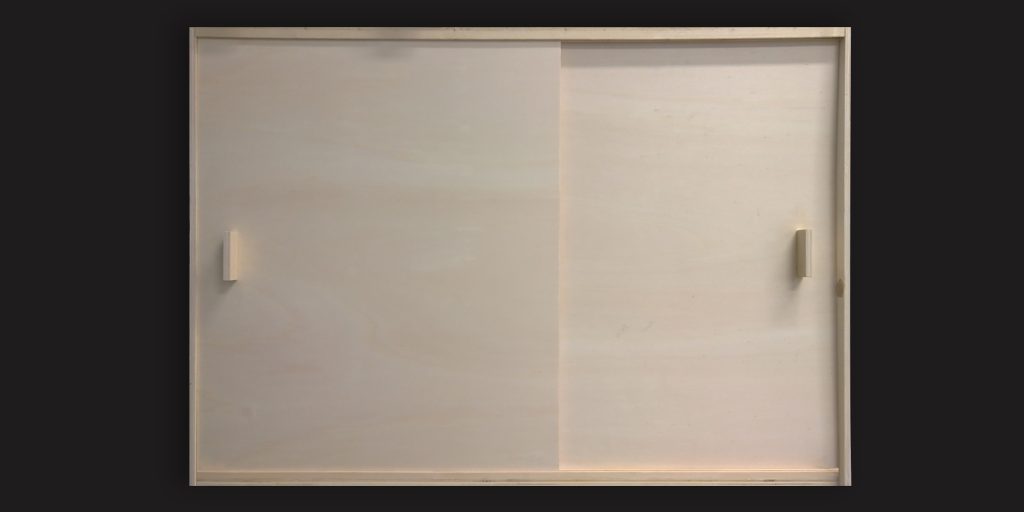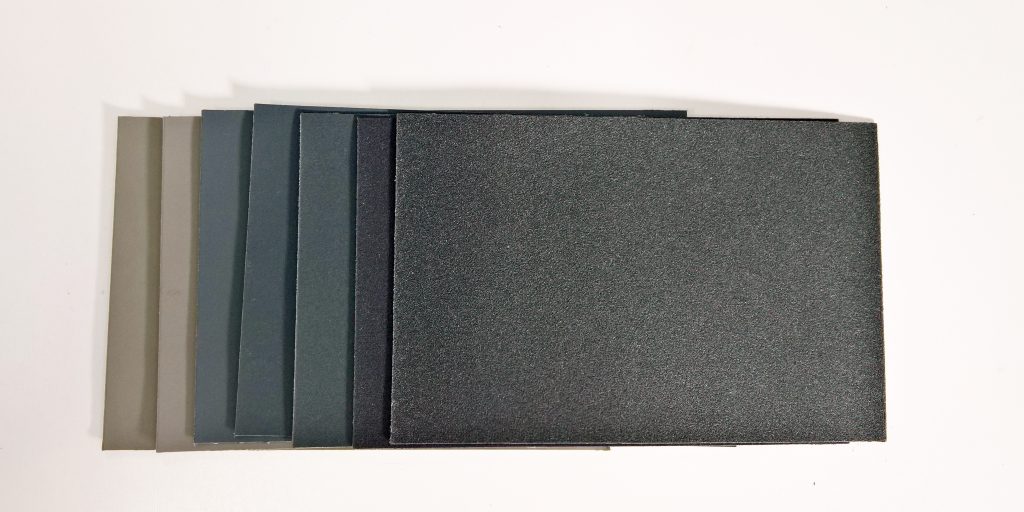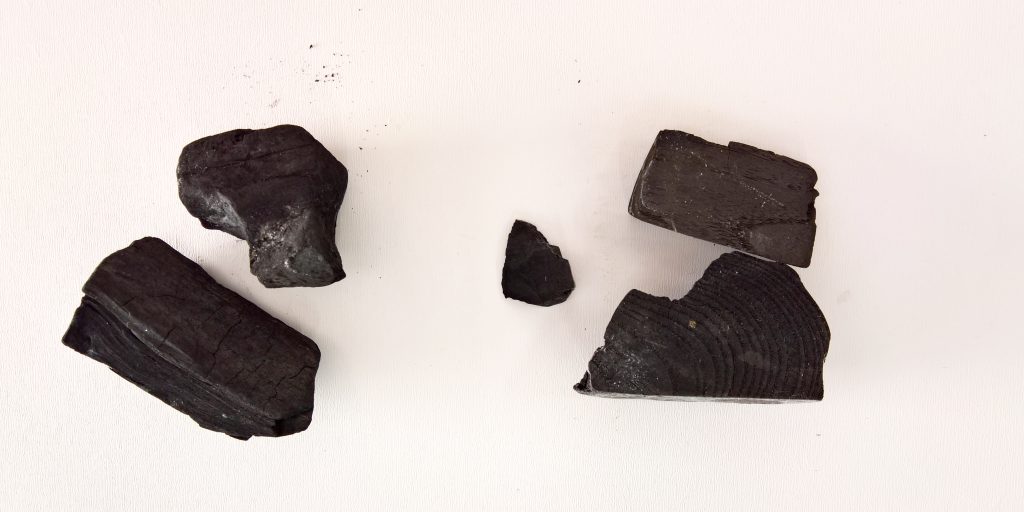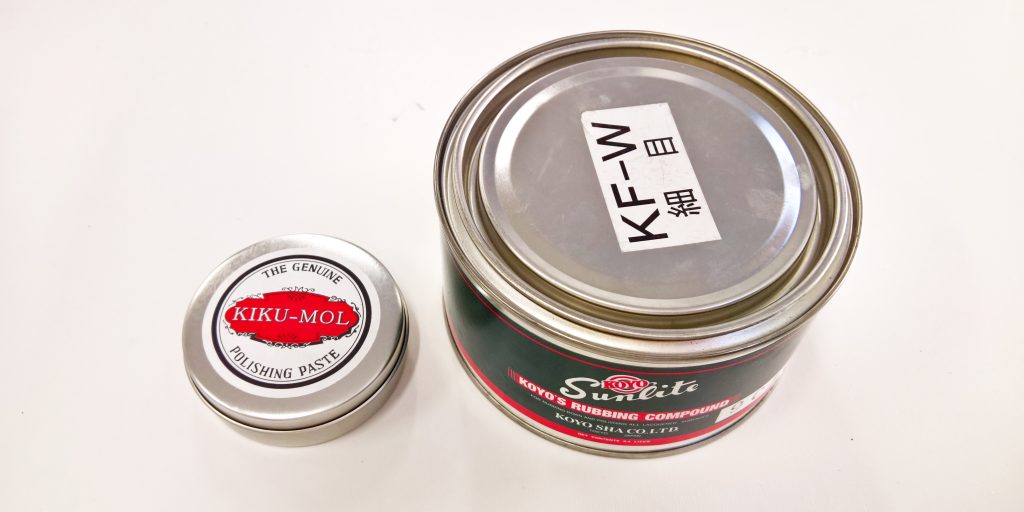There are many urushi tools that are used for urushi lacquering. We indicate the main ones used in the various steps of decoration of lacquered objects.
Furo (urushi curing cabinet)
Undoubtedly the most important, among the urushi tools, is certainly the furo (also called muro). It is a wooden cabinet that is traditionally built in cypress wood, with sliding doors that allow you to insert and extract objects.
The function of the furo is to allow the hardening of the lacquered coatings.
How you can read in the urushi page about the urushi curing process, there are defined parameters of temperature and humidity necessary for the curing of urushi lacquer.
By tradition the inside walls of furo are sprayed with water to increase the relativity humidity, while today cabinets with climate control systems are used.
In my case I decided to create a furo that could be used both in the traditional way, that is through the direct humidification of the walls, and through a special system that constantly monitors the humidity and temperature parameters.
For more information you can watch the video in which I show the bouilding of my urushi curing cabinet.

Spatulas (hera)
The spatula (hera) is used for the preparation of the ground layers of the lacquered objects or for tempering pigments.
Traditionally they are made of Cypress hinoki or Chisya wood.
Even if the wooden spatulas are more flexible, facilitating the preparation of the mixture, there are modern version made of plastic.

Brushes
There is no doubt that the fundamental urushi tools for the production of lacquered objects are brushes.
We can distinguish the brushes in two types. The first are used for applying the lacquer while the second are used for decorative details.
Hake brushes
Among the first are the urushi hake produced with the highest quality of human hair. Woman’s hair, present inside, runs along the entire length of the brush. These are tools that require special care and treatment.
Other hairs that can be used for the realization of the urushi hake, because they have the right hair length, are the horsehair which, however, has a lower quality due to the hardness of the hair.
Hake are flat brushes over 20 cm long made up of an internal part, consisting of the hair and an external covering in cypress wood.
A long and careful process is carried out that leads to the creation of these brushes according to traditional Japanese techniques.
In the case of hontoshi type it can be used for a longer period because you can carve, from time to time, the tip of the brush as the hairs runs along the entire lenght of the brush handle.
In the hantoshi type the hairs runs along the middle of the handle, in another case over third.

There are also many brushes with different types of hair that can be used for urushi lacquer painting. The horse, rat, weasel, rabbit and cat hair are used too.

Fude brushes
Fude are round brushes used to apply lacquer in decoration. They are made with cat and rabbit hair.
The hairs can reach a length of 5 cm in order to obtain very precise details such as lines and threads. They are brushes used in the maki-e technique.
In the case of these brushes there is a distinction on the use which is indicated in the different color of the handle:
- red, brushes with a consistent line width;
- yellow, brushes for freehand drawing, where the thickness of the line may vary;
- black, brushes to fill large areas.

All brushes after being used with urushi should be cleaned with salad oil. It is very important to take care of the cleaning of the brushes and to put them taking care that they remain greasy with oil. This is an essential process for their duration over time.
Ashirai kebo brushes
Furthermore there are also special brushes maded with horse hair that are used to distribute the prinkling powders on the lacquered surfaces: ashirai kebo. They are used in the maki-e tecnique.

Polishing tools
Grinding
The grinding of the ground layers is an important step in the object lacquering technique. This is why the foundation is fundamental for the rendering of the lacquer coatings.
Sandpaper
Sandpaper of different grits can be used in a dry way for the first layers of grounds. The better to use are micro-mesh abrasives that are constructed with a thin layer of soft resilient material between the cloth back and the abrasive crystals. They can be used with water or oil.

Whetstones
Whetstones can be used for both ground (in dry way) and middle layers (moistenig them).
The best quality can be found in natural stones but there are also good examples of artificial stones that can be used.

Sanding
Charcoal (zumi)
Charcoal is the traditional Japanese way for sanding the middle and top lacquer layers.
Harder charcoal from heartwood is obtained from special types or parts of trees like sapwood and used with water for sanding the layers of lacquer. Wood of magnolia, storax, camelia and tung oil tree are used.
Only old, well-seasoned wood is used for the charcoal. The complex process in the furnace, during which the wood must not burn up, usually takes two full days
- Hoh-zumi, for polishing ground layer and middle layer.
- Suruga-zumi, for middle layer or Togidashi-makie.
- Roiro-zumi, for polishing Roiro-nuri (finest).
- Tsubaki-zumi, for polishing Kinji-makie.

Polishing (dozuri)
There are two ways of finishing urushi. In the case of nuritate-shiage the final coating is left as it is.
With roiro-shiage the finishing layer is polished first with soft charcoal (roiro-zumi) and then with fine abrasive powder mixed with oil. This is followed by the application of a suri-urushi coating (kiurushi), applied with a cotton cloth, then rubbed off with washi paper and further polishing.
Powders (sanwa)
The powders are obtained by mineral. They should be mixed with oil (e.g. camellia oil) to make a paste that is used to do the final polishing.
There are powders of different grain among which the finest, used for the finishing, is Migakiko powder.

Paste
At last there are fine polishing paste that can be used also for the maintenance treatments of lacquers surfaces.

Urushi lacquer vendors
Below you can find some urushi lacquer vendors from which to buy lacquers and all the materials you need:
The shops of Japanese suppliers are certainly more stocked in the urushi and tools variety but unfortunately you must always consider the cost of the customs duties. Western suppliers instead only have basic lacquers (raw and refined) or urushi used for kintsugi tecnique.

